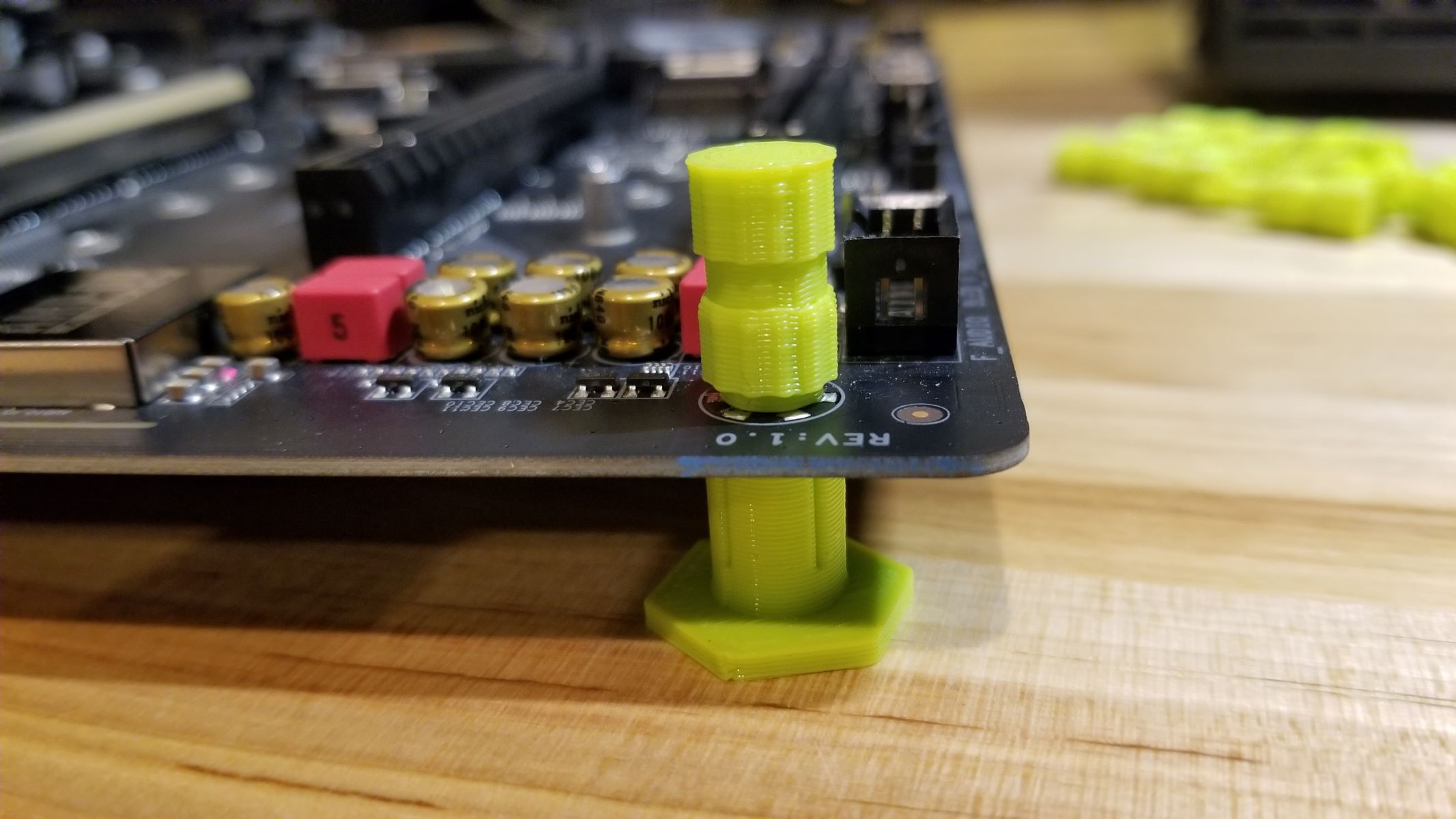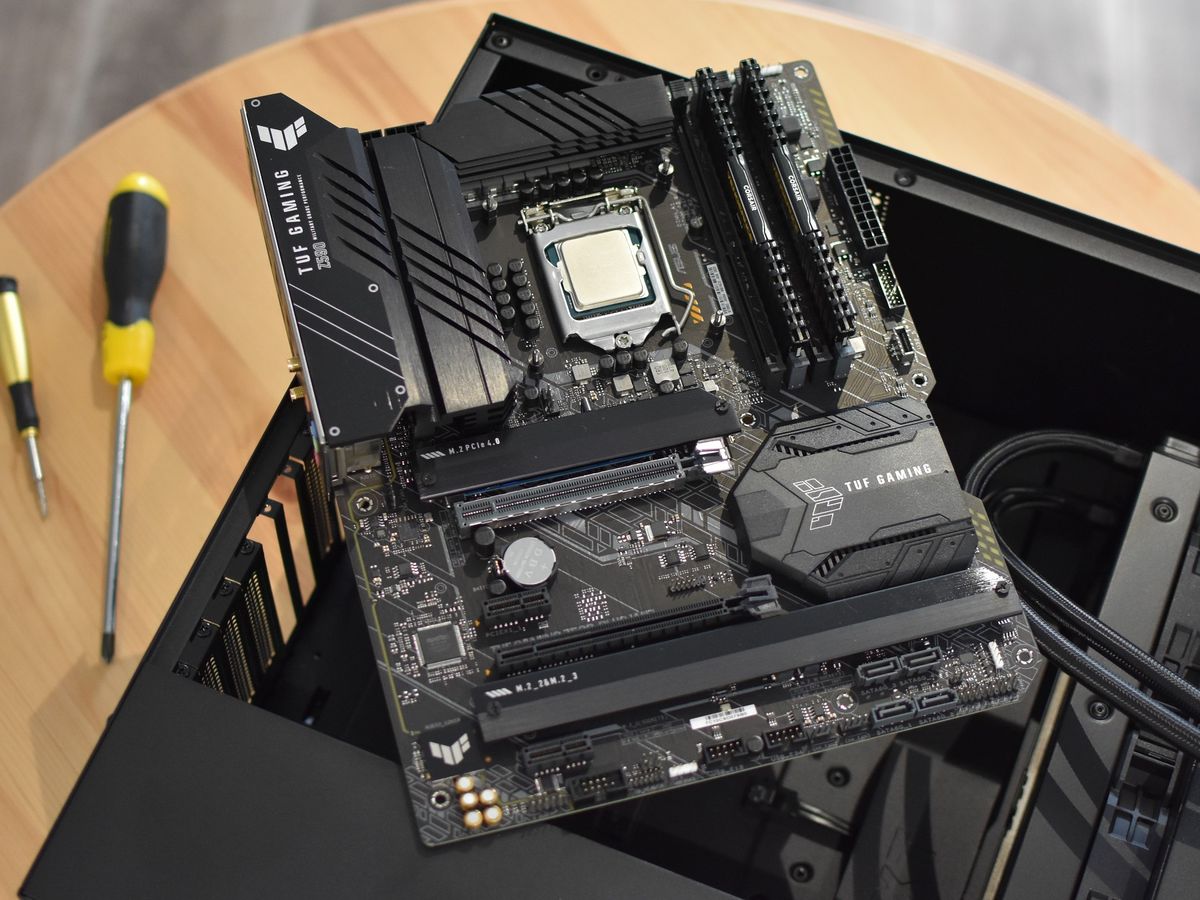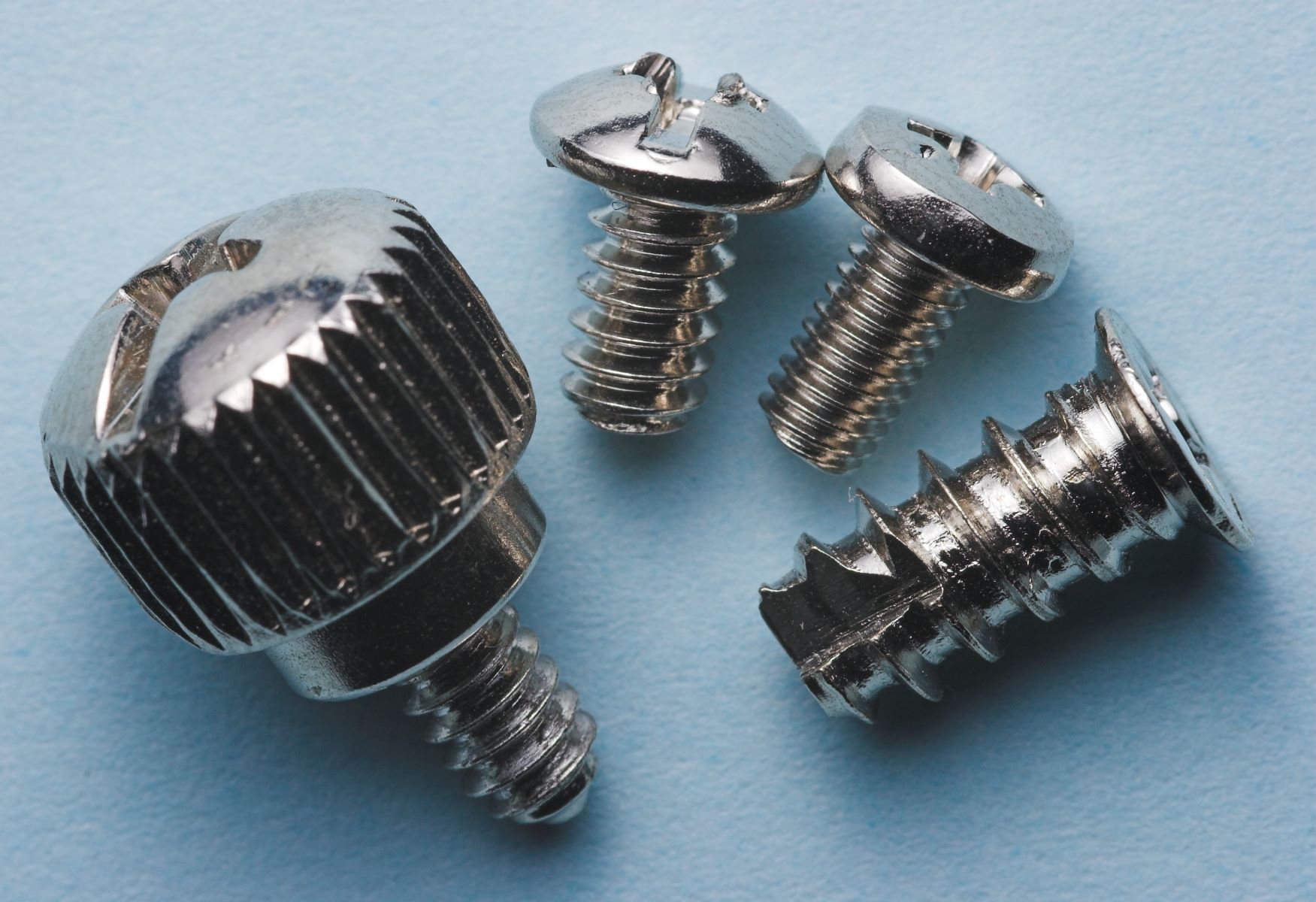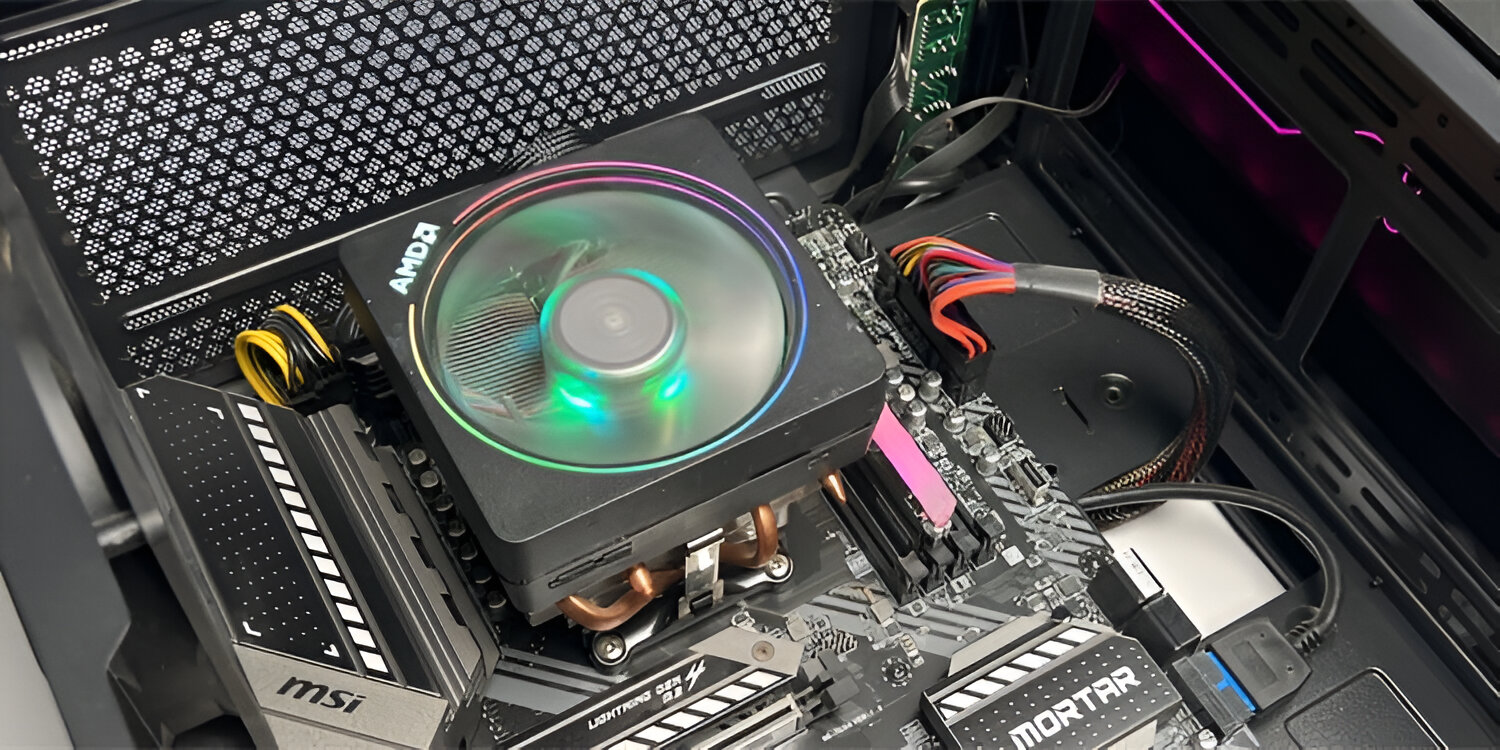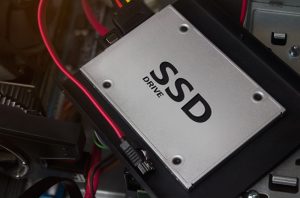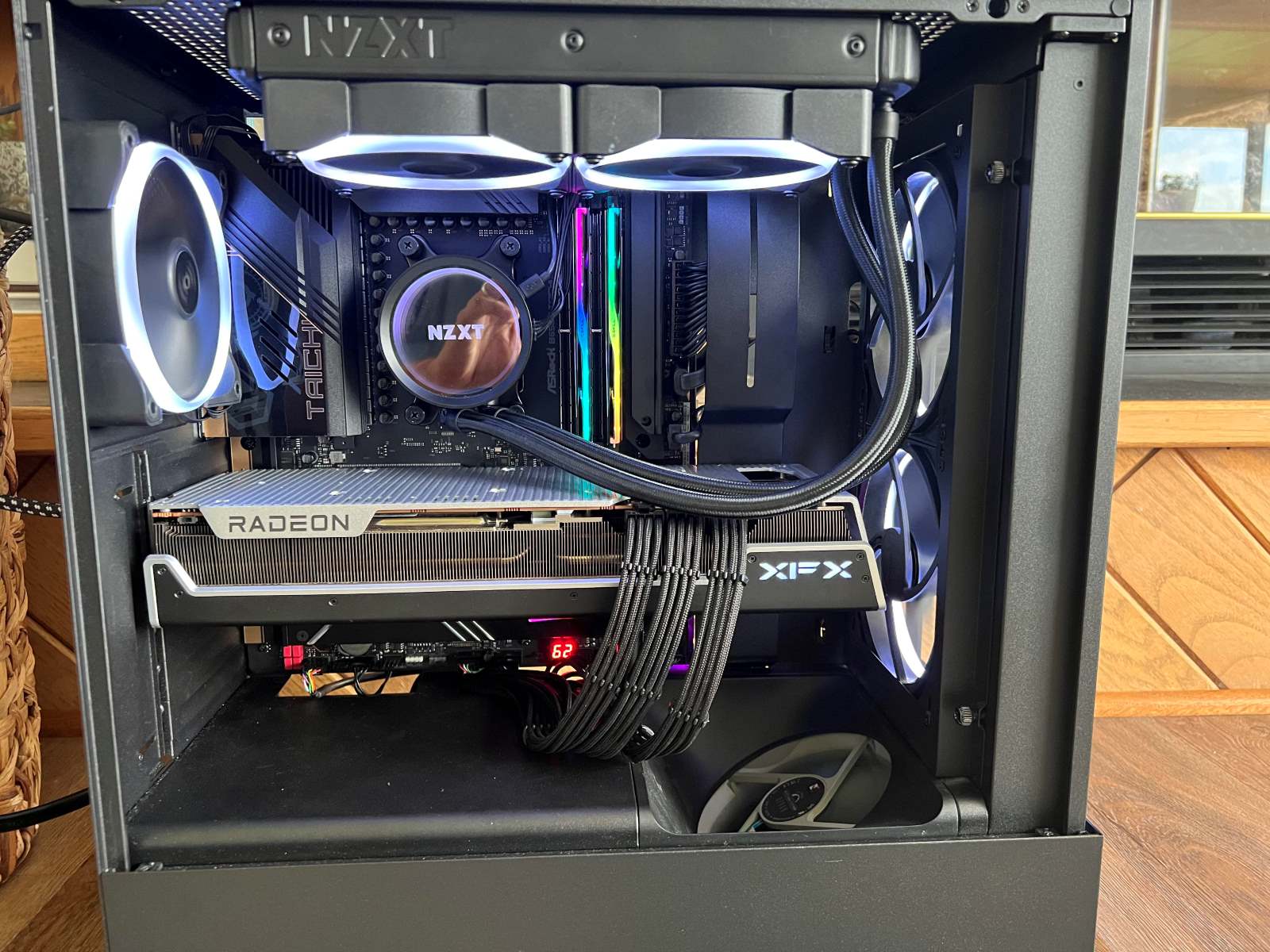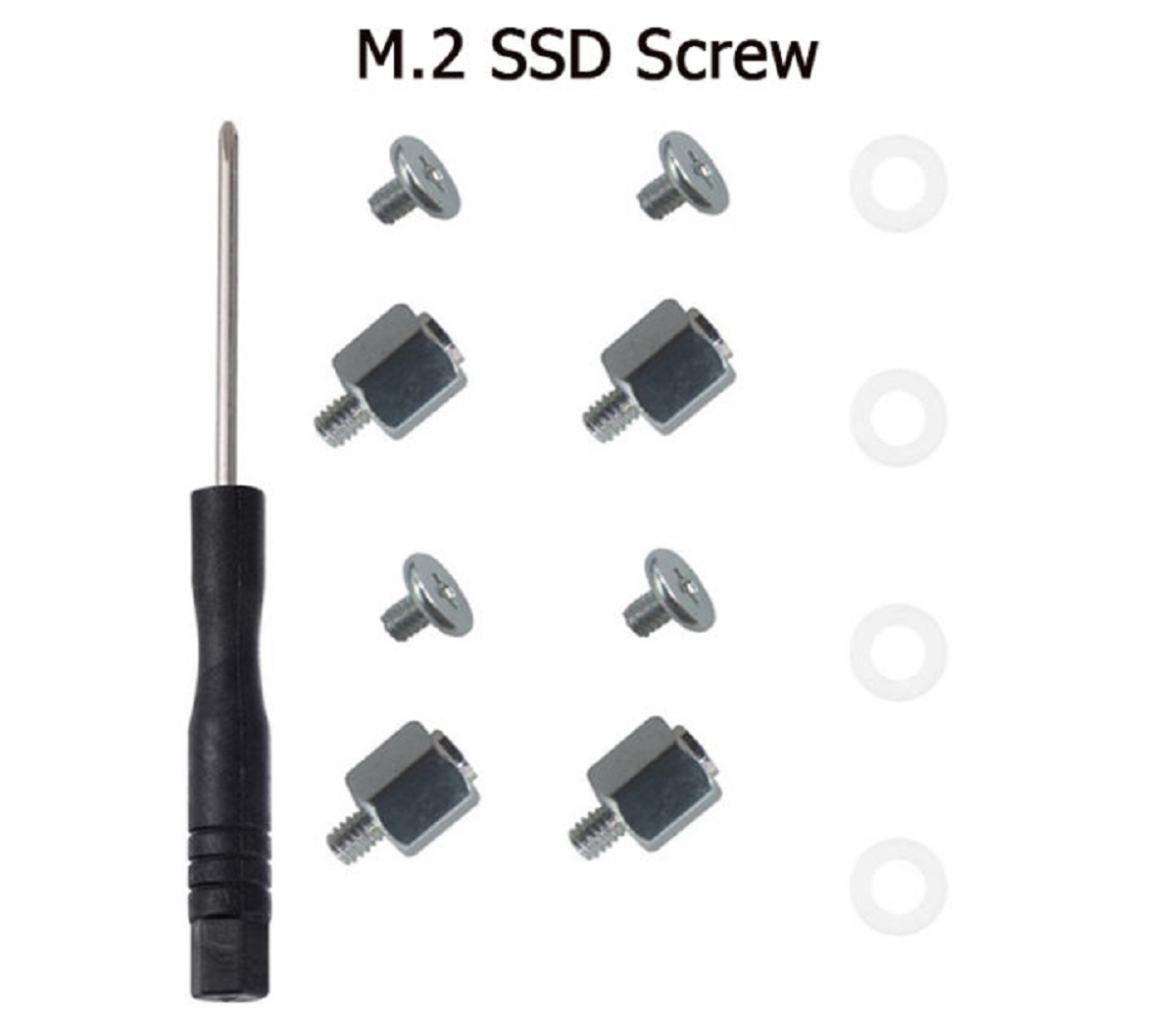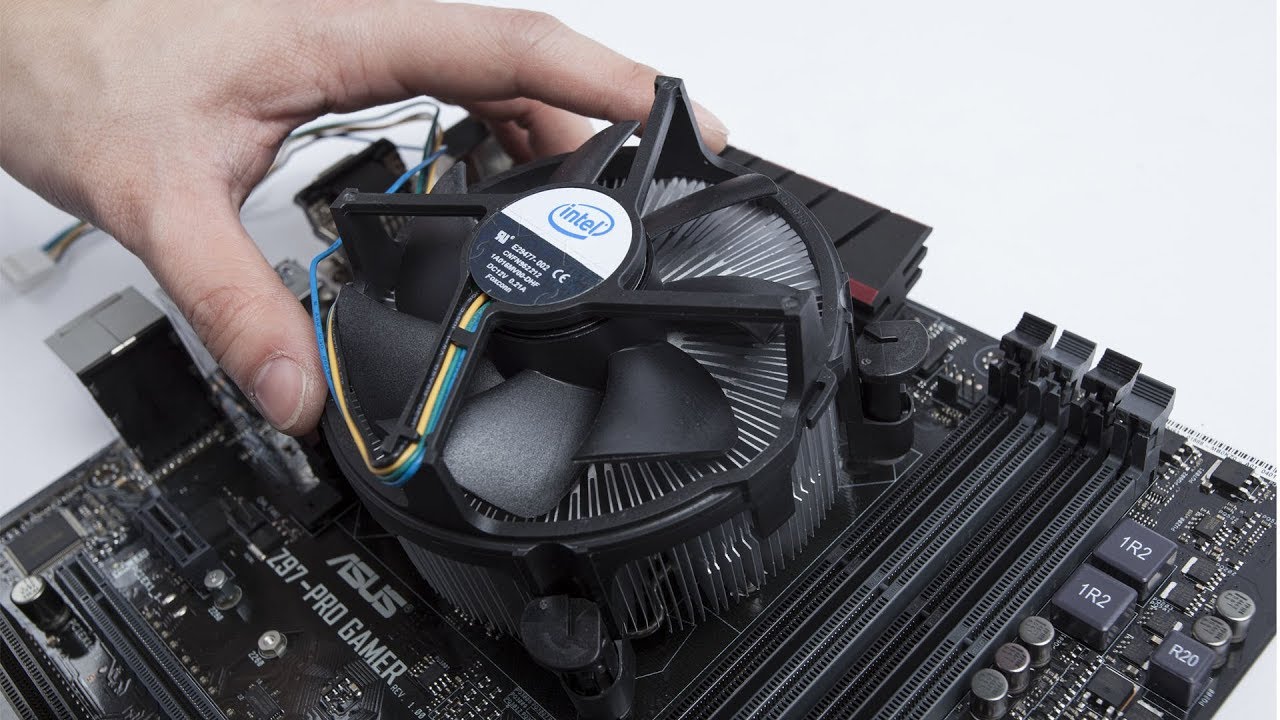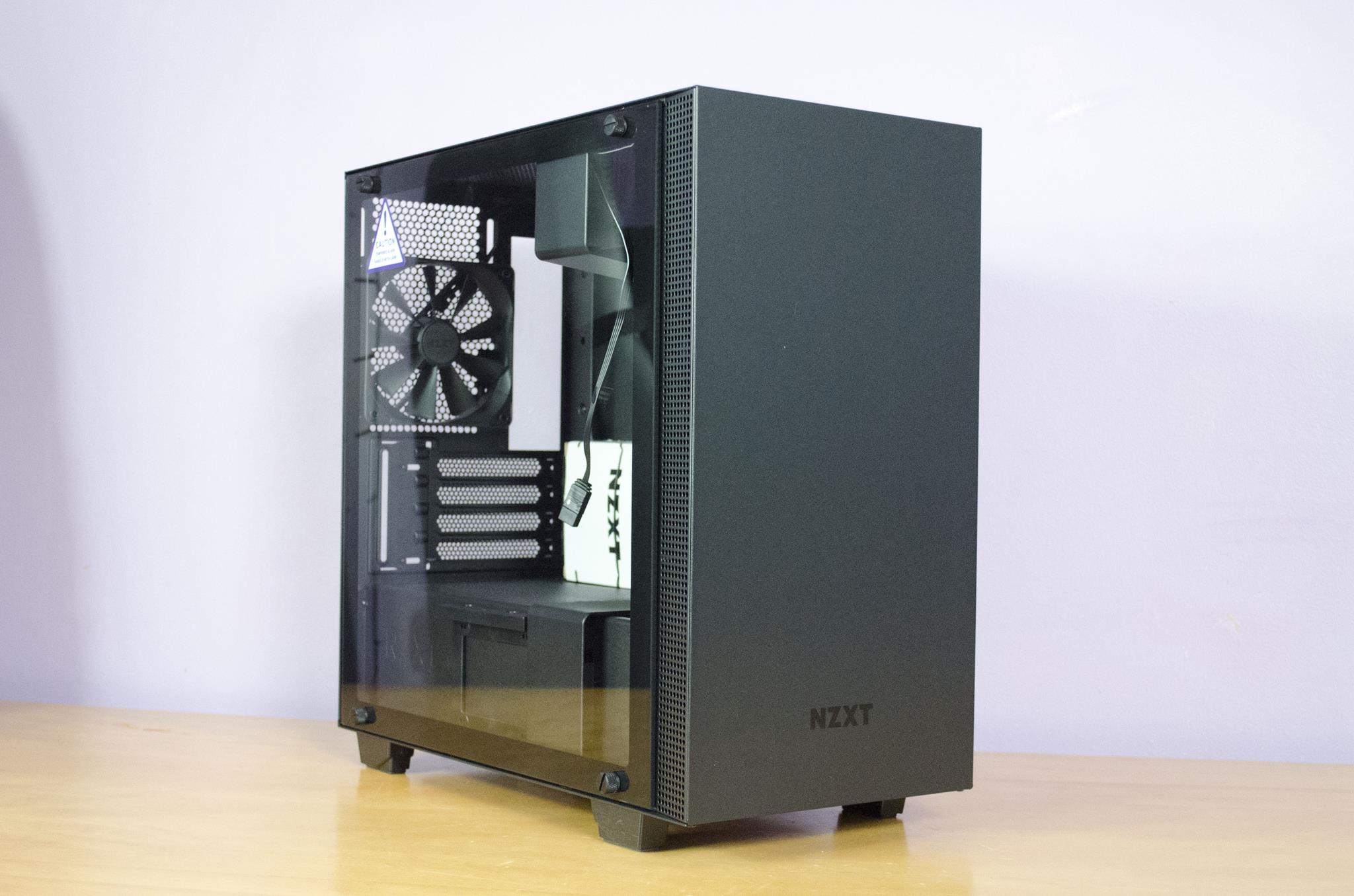Introduction
The motherboard is the central component of a computer, connecting all the essential hardware components and allowing them to communicate with each other. When it comes to installing a motherboard, there is one crucial yet often overlooked component that plays a vital role in ensuring a secure and functional setup – the motherboard standoff.
A motherboard standoff, also known as a mounting standoff or a motherboard spacer, is a small brass or plastic screw-like object used to elevate and secure the motherboard above the metal chassis of the computer case. It creates a gap between the motherboard and the case, providing insulation and preventing direct contact with the conductive surface.
In this article, we will delve into the importance of motherboard standoffs, the benefits they provide, the different types available, and how to properly install them to prevent potential issues such as short circuits. Whether you are a DIY computer builder or just curious about how your computer’s internals work, understanding motherboard standoffs is crucial.
A common misconception among novice builders is that motherboard standoffs are purely for aesthetic purposes. While it is true that they can add a professional look to your PC build, their functionality goes beyond mere appearance. Motherboard standoffs serve two primary purposes: aesthetics and cable management, and preventing short circuits.
Properly managing cables inside your computer case is essential for optimal airflow and thermal regulation. Without standoff mounts, the motherboard would be pressed against the metal case, making it challenging to route cables neatly and efficiently. With the use of standoffs, you can easily organize cables and create an efficient airflow path, thus preventing overheating and potential performance issues.
The second and arguably more critical function of motherboard standoffs is to prevent short circuits. The conductive metal case of a computer can inadvertently come into contact with the sensitive electronic components on the underside of the motherboard. This direct contact can cause a short circuit, potentially damaging the motherboard or other hardware components. By using standoffs, you create an insulating barrier, effectively reducing the risk of a short circuit and ensuring the longevity and stability of your computer system.
What is a motherboard standoff?
A motherboard standoff, also known as a mounting standoff or a motherboard spacer, is a small screw-like object used to elevate and secure the motherboard above the metal chassis of the computer case. It creates a gap between the motherboard and the case, providing insulation and preventing direct contact with the conductive surface.
The standoff is typically made of brass or plastic and is threaded on one end to fit into pre-drilled holes in the computer case. The other end of the standoff is used to secure the motherboard with a screw. These standoffs come in different sizes to accommodate various motherboard form factors, such as ATX, Micro-ATX, and Mini-ITX.
By lifting the motherboard off the case, standoffs play a crucial role in preventing electrical short circuits. The motherboard contains a complex network of circuits and components, including microchips, capacitors, and resistors. These components are extremely sensitive to electrical currents and can be easily damaged if they come into direct contact with the metal case.
In addition to providing insulation, motherboard standoffs also help with proper cable management during the installation process. Routing cables neatly and efficiently is essential to ensure optimal airflow and prevent overheating. By using standoffs, you create a space between the motherboard and the case, allowing for better cable organization and airflow, resulting in improved system performance and stability.
It’s important to note that not all computer cases come with pre-installed standoffs. Some cases may require you to install the standoffs yourself, while others may have standoffs already installed in the appropriate locations for specific motherboard sizes. It’s crucial to match the standoff configuration with the motherboard’s mounting holes to ensure a secure and properly aligned installation.
Overall, the motherboard standoff is a simple yet essential component when it comes to installing a motherboard. It not only provides insulation to prevent short circuits but also allows for proper cable management, ensuring optimal performance and stability of the computer system.
Why are motherboard standoffs important?
Motherboard standoffs may seem like a small and insignificant part of a computer build, but their importance cannot be overstated. Here are a few key reasons why motherboard standoffs are crucial:
1. Insulation and Preventing Short Circuits: The primary function of motherboard standoffs is to create a gap between the motherboard and the metal case, providing necessary insulation. This insulation prevents direct contact between the sensitive electronic components on the underside of the motherboard and the conductive surface of the case. Without standoffs, there is a high risk of short circuits, which can damage the motherboard and other hardware components.
2. Aesthetics and Cable Management: While not their primary purpose, motherboard standoffs also contribute to the overall aesthetics and cable management of a computer build. By elevating the motherboard, standoffs create space for organizing cables, ensuring a neat and clutter-free interior. Proper cable management not only enhances the appearance but also improves airflow within the case, promoting efficient cooling and maintaining optimal performance.
3. Alignment and Stability: Motherboard standoffs play a crucial role in aligning the mounting holes of the motherboard with the corresponding holes in the case. Proper alignment ensures that the motherboard is securely fastened and anchored in place, preventing any unintended movement or vibrations that could lead to hardware damage or malfunction.
4. Compatibility and Flexibility: Motherboard standoffs come in different sizes and configurations to accommodate various motherboard form factors, such as ATX, Micro-ATX, and Mini-ITX. This compatibility ensures that the motherboard is correctly installed and supported, regardless of its size or shape. Additionally, the use of standoffs provides flexibility when upgrading or replacing hardware components as it allows for easy removal and installation of the motherboard without damaging the case or other components.
5. Safety and Longevity: By using motherboard standoffs correctly, you ensure the safety and longevity of your computer system. They act as a protective barrier, shielding the motherboard from potential electrical shorts and physical damage. This, in turn, extends the lifespan of the motherboard and its associated components, providing a reliable and stable computing experience.
In summary, motherboard standoffs are critical components in any computer build. They provide insulation to prevent short circuits, contribute to cable management and aesthetics, ensure alignment and stability, offer compatibility and flexibility, and ultimately enhance the safety and longevity of your computer system.
Aesthetics and Cable Management
While the primary purpose of motherboard standoffs is to provide insulation and prevent short circuits, they also have a significant impact on the aesthetics and cable management of a computer build. Here’s why aesthetics and cable management are important:
1. Neat and Professional Appearance: A clean and organized interior not only enhances the overall appeal of your computer but also gives a sense of professionalism. Motherboard standoffs play a crucial role in achieving this by creating a space between the motherboard and the case, allowing for better cable organization and routing. With standoffs in place, you can easily hide cables behind the motherboard, resulting in a tidy and clutter-free interior.
2. Improved Airflow: Effective cable management is not just about aesthetics, but also about optimizing airflow within the computer case. When cables are neatly arranged and properly secured using motherboard standoffs, it becomes easier to create clear pathways for air to flow through the case. This promotes better cooling, prevents overheating of components, and maintains optimal performance and system stability.
3. Easy Access for Maintenance and Upgrades: A well-managed cable setup with the help of motherboard standoffs makes it easier to access and swap components when necessary. With cables neatly organized, you can quickly identify and disconnect the necessary connections without tangling or obstructing other parts. This saves time during maintenance or when upgrading hardware, ensuring a smooth and hassle-free process.
4. Reduced Risk of Damage: Proper cable management with the use of standoffs minimizes the risk of unintentional damage. When cables are loosely hanging or tangled, there is a greater chance of accidentally pulling or tripping over them, which can result in disconnected or damaged components. By securing cables with standoffs, you create a clean and organized setup that reduces the risk of accidental damage or disconnection.
5. Enhanced Component Lifespan: Efficient cable management not only prevents physical damage but also extends the lifespan of your computer components. When cables are properly organized and secured, there is less strain and tension on the connectors and ports, reducing the chances of wear and tear. This ultimately leads to better overall longevity and reliability of your computer system.
Overall, aesthetics and cable management go hand in hand, and motherboard standoffs play a crucial role in achieving both. By using standoffs, you can create a visually appealing, organized, and efficient cable setup that not only improves the overall look of your computer but also enhances airflow, reduces the risk of damage, and extends the lifespan of your components.
Preventing Short Circuits
One of the primary reasons motherboard standoffs are essential is their role in preventing short circuits. Short circuits occur when there is an unintended electrical connection between two conductive surfaces, potentially causing damage to the motherboard and other hardware components. Here’s how motherboard standoffs help prevent short circuits:
1. Insulation: Motherboard standoffs act as a barrier between the conductive metal case of the computer and the sensitive electronic components on the underside of the motherboard. By creating a gap between the two, standoffs effectively insulate the motherboard, reducing the risk of electrical contact and short circuits.
2. Protection from Static Electricity: Standoffs also provide protection against static electricity, which can be damaging to computer components. When the motherboard is mounted directly onto the metal case, it is more susceptible to static discharge. By using standoffs, you create an insulating layer that helps dissipate static charges and reduces the likelihood of damage from electrostatic discharge (ESD).
3. Proper Grounding: Motherboard standoffs ensure that the motherboard is properly grounded. Grounding is crucial in computer systems as it helps maintain a stable electrical reference point and prevents the accumulation of static charges. Without proper grounding, the risk of electrical instability and subsequent short circuits increases significantly. Standoffs provide a dedicated grounding point for the motherboard, helping to maintain system stability and prevent potential damage.
4. Alignment and Secure Fastening: Standoffs play a critical role in aligning the motherboard with the mounting holes in the computer case. This ensures that the motherboard is securely fastened and held in place, preventing any accidental movement or vibrations that could potentially lead to electrical connections and short circuits.
5. Compatibility and Correct Mounting Holes: Different motherboard form factors require specific mounting hole placements and configurations. Motherboard standoffs come in various sizes to accommodate these different form factors, ensuring the correct alignment of the motherboard. Using the appropriate standoffs for your specific motherboard prevents any misalignment or improper installation that could result in short circuits.
By using motherboard standoffs correctly, you significantly reduce the risk of short circuits, protecting your valuable computer components from potential damage. Proper insulation, protection against static electricity, grounding, secure fastening, and compatibility are all key factors that standoffs provide, contributing to a stable and reliable computer system.
Types of Motherboard Standoffs
There are several types of motherboard standoffs available to accommodate different motherboard form factors and mounting hole configurations. Here are the most common types you may come across:
1. Screw-In Standoffs: Screw-in standoffs are the most common type of motherboard standoffs. As the name suggests, they are screwed into the pre-drilled holes in the computer case using a screwdriver. These standoffs provide a secure and stable mount for the motherboard.
2. Snap-In Standoffs: Snap-in standoffs do not require screws to be secured in place. They feature a push-in design, allowing them to snap into the mounting holes of the computer case. Snap-in standoffs are generally made of plastic and can be easily installed and removed.
3. Adhesive Standoffs: Adhesive standoffs have an adhesive backing that allows them to be attached directly to the computer case. These standoffs are typically made of plastic and provide a convenient option for securing the motherboard in place.
4. Adjustable Standoffs: Adjustable standoffs are designed to accommodate various motherboard form factors and mounting hole configurations. They feature a threaded design that can be adjusted to match the specific requirements of the motherboard being installed.
5. Insulating Standoffs: Insulating standoffs, often made of nylon or plastic, provide an additional layer of insulation between the motherboard and the computer case. They offer enhanced protection against electrical shorts and help prevent ESD damage.
6. M3 Standoffs: M3 standoffs refer to standoffs that feature M3 threads, which are commonly used for mounting motherboards. M3 standoffs come in different lengths to accommodate different motherboard and case combinations.
It’s important to note that not all cases come with pre-installed standoffs or support all types of standoffs. Before purchasing standoffs, it is essential to check your computer case’s specifications and motherboard form factor, ensuring compatibility with the standoffs you plan to use.
Note: It is recommended to use standoffs that are made of non-conductive material, such as plastic, to provide proper insulation and prevent short circuits.
Understanding the different types of motherboard standoffs and selecting the appropriate ones for your specific motherboard and case combination is crucial for a secure and correctly aligned installation.
Installing Motherboard Standoffs
Properly installing motherboard standoffs is essential to ensure a secure and stable mounting for your motherboard. Here are the steps to install motherboard standoffs:
1. Identify the Mounting Holes: Start by identifying the mounting holes on your computer case that correspond to the motherboard’s form factor. These holes are usually indicated by small circles or squares near the edges of the case.
2. Align the Standoff Holes: Place the motherboard in the case and align its mounting holes with the corresponding holes on the case. Ensure that the I/O shield on the back of the motherboard lines up properly with the case’s I/O shield cutout.
3. Install Standoffs: Take the appropriate motherboard standoffs and insert them into the corresponding mounting holes on the case. Screw-in standoffs require a screwdriver to be securely tightened, while snap-in standoffs can be pressed into place.
4. Check Alignment and Stability: Once all the standoffs are installed, double-check the alignment of the motherboard and ensure that it sits securely on the standoffs. Gently push the motherboard to ensure there is no play or movement.
5. Install the Motherboard: Carefully lower the motherboard onto the standoffs, aligning the mounting holes on the motherboard with the standoffs. Apply gentle downward pressure to ensure the screws line up correctly with the standoffs.
6. Secure the Motherboard: Using the screws provided with the case or motherboard, fasten the motherboard onto the standoffs. Begin with the screws closest to the I/O shield and gradually work your way around, tightening each screw until all are securely fastened.
7. Test for Stability: After securing the motherboard, give it a gentle shake to ensure it is firmly in place. If there is any movement or wobbling, check the standoffs and screws to ensure they are properly tightened and aligned.
It’s important to remember not to overtighten the screws, as it may damage the motherboard or strip the standoffs. Use care and tighten the screws just enough to securely fasten the motherboard.
Once the motherboard is securely in place, you can proceed with connecting power cables, data cables, and any additional components before closing the computer case.
Properly installed motherboard standoffs provide the necessary insulation and support for your motherboard, ensuring a stable and reliable computer system.
Troubleshooting Common Issues with Motherboard Standoffs
While installing motherboard standoffs is generally a straightforward process, occasionally issues may arise. Here are some common issues with motherboard standoffs and troubleshooting steps:
1. Misaligned Standoffs: If the motherboard is not properly aligned with the standoffs, it may not fit correctly onto the case. Double-check the mounting holes on the motherboard and ensure they line up precisely with the standoffs. Make any necessary adjustments to ensure proper alignment.
2. Missing Standoffs: Sometimes, computer cases may not come with pre-installed standoffs. If you find that some mounting holes do not have standoffs, purchase the appropriate standoffs separately and install them to ensure proper support and insulation for the motherboard.
3. Stripped Standoff Threads: If the threads of a standoff or the corresponding screw become stripped, it may not provide a secure mount for the motherboard. In such cases, replace the damaged standoff or use a different mounting hole that is in good condition.
4. Insufficient Standoffs: It is essential to use the correct number of standoffs to support the entire motherboard. If there is an insufficient number of standoffs, the motherboard may bend or flex, which can lead to connection issues or potential damage. Install additional standoffs in the vacant mounting holes to ensure even support across the motherboard.
5. Standoffs Touching Components: Check that the standoffs are not touching any components on the underside of the motherboard. Even a slight contact with sensitive components can cause electrical shorts or damage. Adjust any standoffs that are in direct contact with components and make sure they are properly insulated.
6. Over-tightened Screws: Over-tightening the screws that fasten the motherboard onto the standoffs can lead to motherboard damage or stripped threads. Ensure that the screws are tightened securely but not excessively. Use a screwdriver with a torque-limiting feature or tighten the screws by hand until they are snug.
7. Loose Standoffs: A loose standoff can cause the motherboard to wobble or move, potentially leading to connection issues or damage. Check all the standoffs to ensure they are tightened securely into the mounting holes. If any standoffs are loose, remove them, apply thread-locking adhesive if necessary, and tighten them back into place.
If you encounter any other issues with motherboard standoffs that you are unable to resolve, consult the user manual or seek assistance from a professional to avoid any potential damage to your computer system.
Proper troubleshooting and addressing any issues promptly ensures that your motherboard is securely and safely mounted, providing a stable foundation for your computer build.
Conclusion
Motherboard standoffs may seem like a small and insignificant component, but they play a crucial role in ensuring the stability, functionality, and longevity of your computer system. By providing insulation, preventing short circuits, and supporting proper cable management, motherboard standoffs contribute to the overall performance and aesthetics of your computer build.
Understanding the importance of motherboard standoffs is crucial for DIY computer builders and anyone interested in computer hardware. By properly installing standoffs, you can create a secure and stable mounting for your motherboard, preventing potential issues such as electrical shorts and damage to sensitive components.
Remember to choose the appropriate type of standoffs for your specific motherboard and case, ensuring proper alignment and insulation. Double-check the installation for any misaligned standoffs, stripped threads, or loose components to ensure a secure and stable mounting.
Furthermore, proper cable management with the use of motherboard standoffs improves airflow, prevents overheating, enhances aesthetics, and simplifies maintenance and component upgrades. Taking the time to organize and secure cables can lead to a cleaner and more efficient computer build.
In conclusion, motherboard standoffs are not mere accessories; they are integral components in any computer build. They provide insulation, prevent short circuits, and contribute to proper cable management and aesthetics. By understanding their importance and following the proper installation techniques, you can ensure a stable and reliable computer system that performs at its best.







